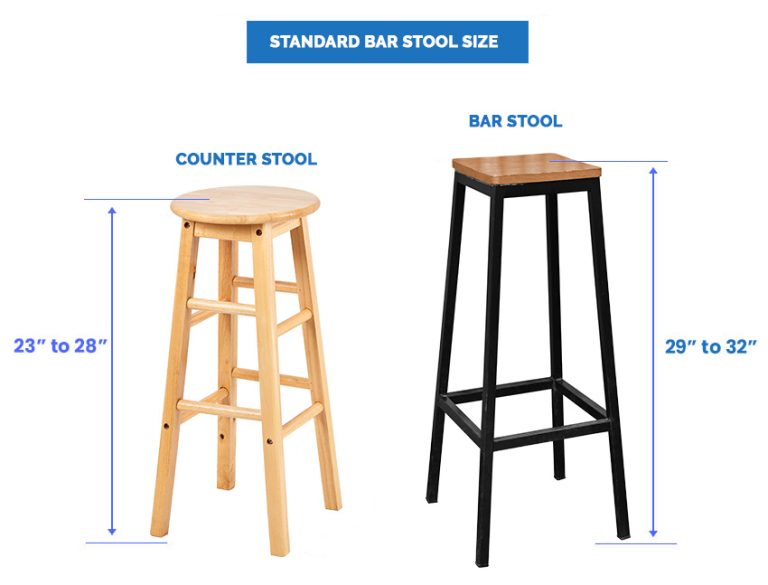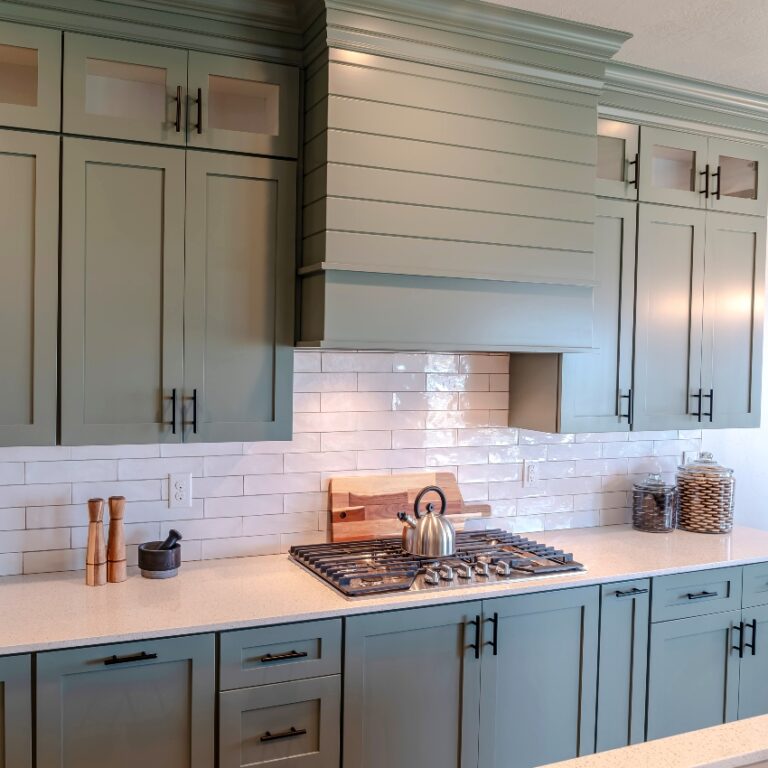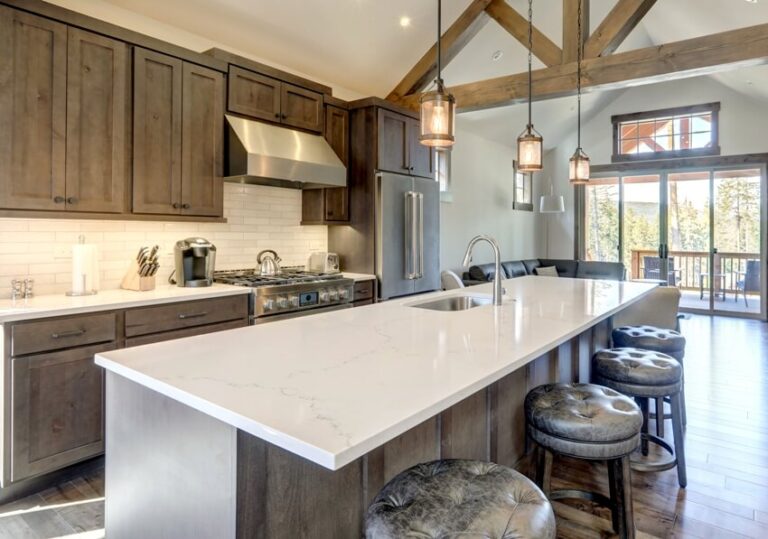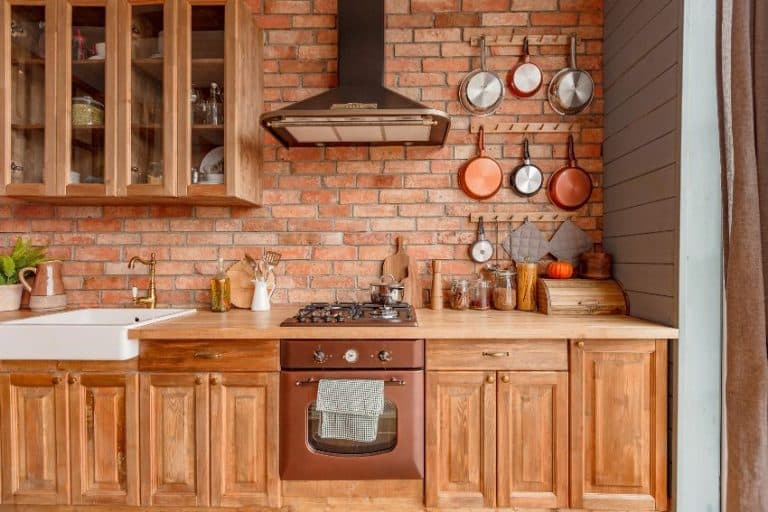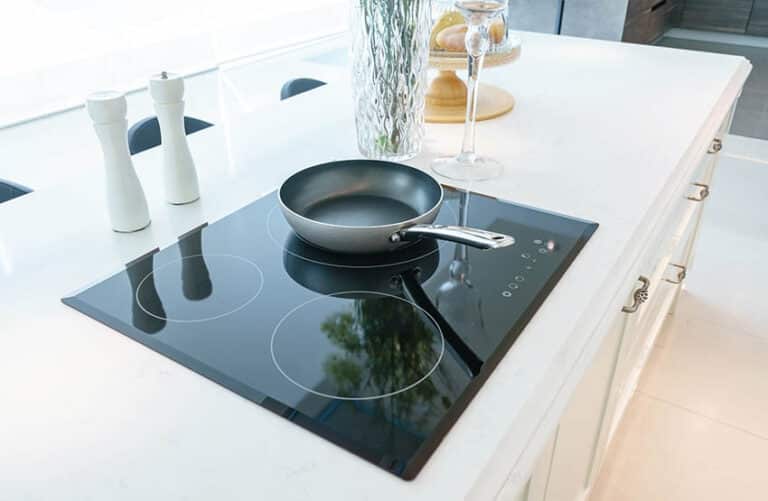Should You Choose Leathered Granite Countertops?

An emerging trend in kitchen and bathroom design, leathered granite countertops are beautiful, practical, and unique. While there are some specific maintenance requirements to keep in mind, these durable natural stone countertops are easy to care for and will last for years. Rather than polishing the stone to a high gloss or leaving it unpolished and looking dusty, leathered granite offers consumers a middle way. More shiny than honed finishes, but not as reflective as polished granite countertops, leathering produces an interesting texture that still looks great for interior designs. But, should you choose leathered granite countertops for your home?
What is Leathered Granite?
After granite is quarried and cut into slabs, water jets, chemical processes, diamond-head brushes, and grinding wheels can be used to create a variety of finishes on the surface of the stone. Polished finishes have long been popular for their elegant appearance and shine. The polishing process is touted for its ability to bring out the rich tonal colors of this natural stone.
The traditional alternative to a polished granite surface is a honed finish. The honing process is the same as the polishing process, minus the final step. While honing granite doesn’t do much for accentuating the color of the stone, it produces an interesting texture that is great for less formal kitchens.
A new trend in kitchen countertops, leathering is a finishing process that can be applied to quarried granite. Diamond-tipped brushes lightly polish the stone while removing imperfections, leaving behind a gorgeous textured surface that begs to be touched. The colors are richer than honed finishes, but leathered granite lacks the reflective glare of polished options, providing a look ranging from sleek and contemporary to charming and timeless.
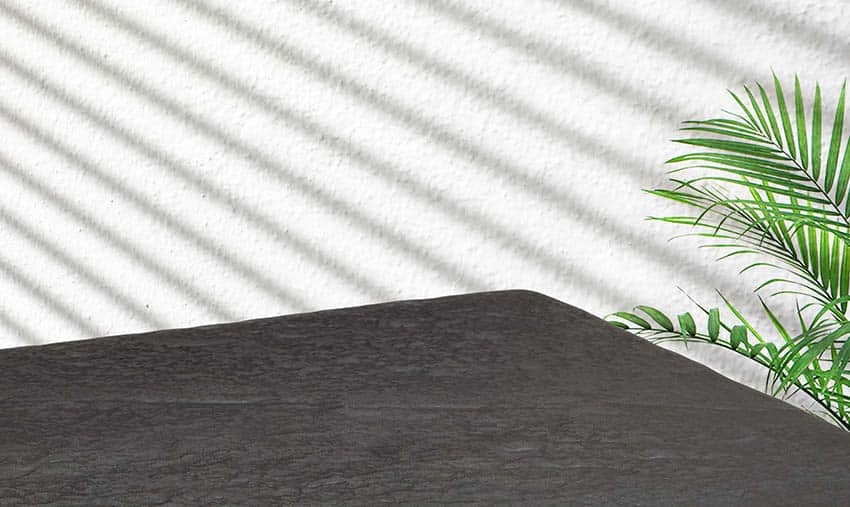
Proponents of leathered granite note that it reveals more of the natural contours and texture of the stone. Not all leathered granite slabs will have the same appearance. Textures vary from shallow to deep, giving homeowners another opportunity for customization.
Pros and Cons Of Leathered Finish Granite Countertops
Leathered countertops are a great choice for a variety of reasons. They are rising in popularity, so don’t be surprised if your friends have never heard of leathered granite. If you like to be ahead of the trend when it comes to home design, you can’t go wrong with a leather finish. They aren’t going out of style anytime, so are a good choice for updating or redoing your countertop.
Like all granite, those with leathered surfaces are extremely durable, as well as scratch and scorch resistant. The textured surface is more casual and approachable than highly polished options, but deeper and richer in color than honed applications. Any granite countertop will need to be periodically resealed. Leathered surfaces need resealing more frequently than polished finishes. Plan to refinish once a year, and even more if your countertop is subject to heavy use or lots of water. The resealing schedule is similar to that of a honed finish.
Leathering granite reveals the deep and dark colors of this beautiful natural stone. If you want to showcase your countertop without polishing it to a high gloss, leathering is the natural solution. This finish may also be more resistant to bacteria than honed or polished slabs. The leathering process tightens the natural pores of the stone, making it less likely to harbor microbes.
Leathered Finish Granite Cost
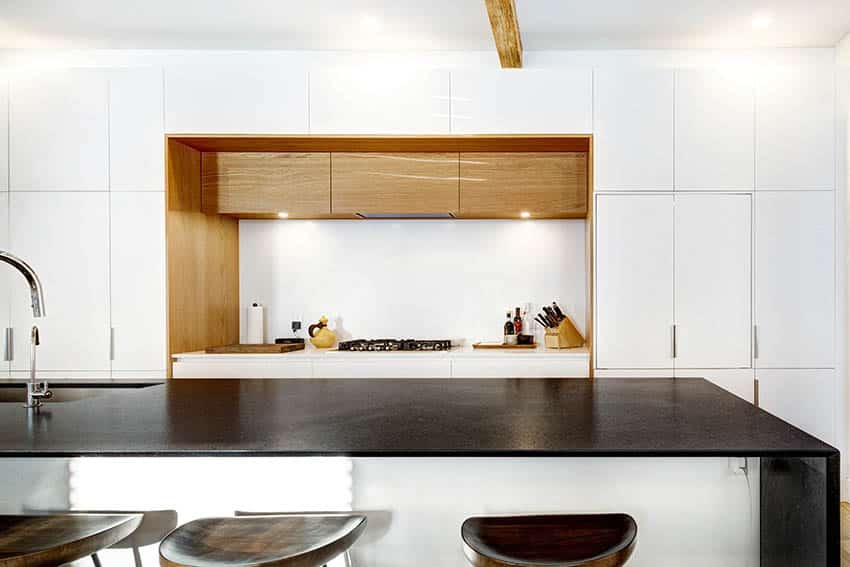
Granite is an abundant natural stone found in many locations across the world. Imported stones are generally more expensive than domestic stones due to the additional transportation costs. The cheapest option is likely to be the one that was quarried nearest to the job site. Including installation, expect to pay between $50 and $200 per square foot for a granite countertop.
The finish applied to the granite affects how it is priced. Polished finishes are the most common, well-known, and popular finishing option available. It also has the lowest price. Honed finishes actually requires less labor to produce, but is more expensive because of lower demand, yet it boasts a unique and luxurious style.
Leathered granite is the most expensive finishing process at all. As it becomes more popular and modern, you can expect the price to go down, but for now, trendsetters are paying a premium for comfortable surfaces made from unique materials.
The average size of a kitchen countertop is 30 square feet. In a kitchen of this size, you should expect to pay between $4,500 and $6,000 for professionally-installed leathered granite countertops. The long-term beauty of these surfaces and their low maintenance requirements make them a worthwhile investment, as long as proper care is taken using appropriate products.
Types of Granite With Leathered Finishes
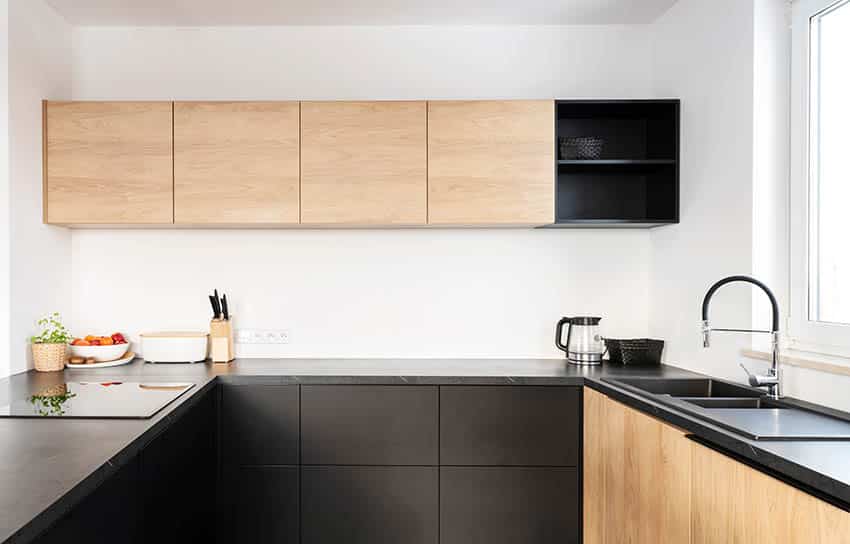
No two leathered granite countertops will look exactly the same. Variations in the stone depend on its mineral content, the area from which it was quarried, and the depth of the leathering. Deeply leathered surfaces have visible pits and dimples. A shallower leathering will also dimple the surface, but you may only be able to perceive the difference in texture with your hands.
The depth of the leathering depends on how the diamond tipped brushes were applied to the surface of the stone. You can usually specify the depth of the leathering when ordering your countertop from the supplier. Some stone varieties look better with this finish than other types.
A few of the most popular types of leathered granite are Black Forest, Antique Brown, and Steel Gray. The unique colors and features of these stones create a stunning effect that will make your countertop the centerpiece of any room.
Antique Brown
While black and gray are the most common colors seen in granite, did you know it also comes in brown? More accurately, it’s a deep brown-black.
Finishing Antique Brown surfaces with diamond brushes brings out that rich mahogany color. The result is reminiscent of cozy leather chairs that have been broken in through years of use — comforting, beautiful, and eminently touchable.
Black Pearl
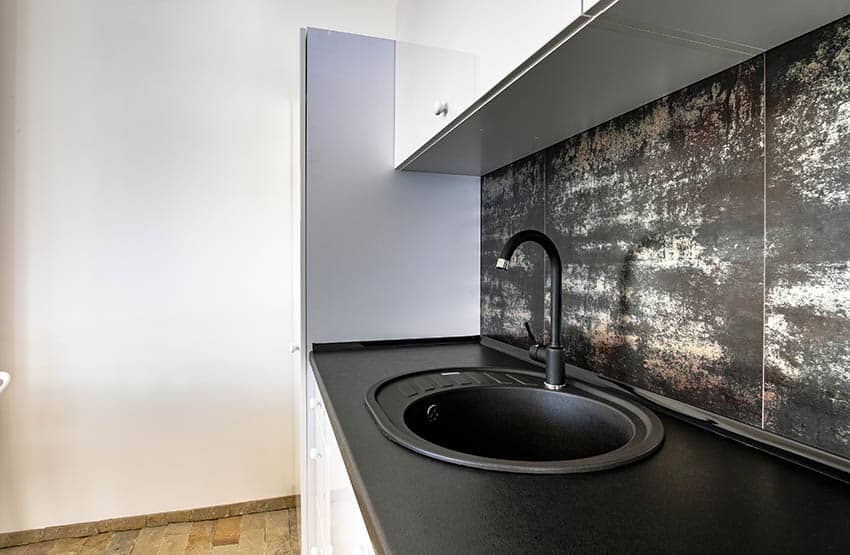
Black pearl is a very dense stone that primarily comes from India with a very consistent black color throughout. It can be found with different specks of silver, gold, and browns that create a uniform appearance.
Since it is so dense it generally does not require sealing. The stone is often sold in two different grades one being thicker than the other. See other types of black granite countertops here.
Black Forest
This dark stone is quarried from India. The dominant color is a gorgeous obsidian, which ripples with high-contrast white veining. When the finish is applied, the natural contours of the stone are revealed. Reseal with a stone color enhancer to get the most dramatic effect.
Black Galaxy
This type is uniquely dense and nonporous, and does not need to be sealed. Black galaxy has a less dramatic texture than other types. Of all the types of leathered options, this one will be closest in appearance to actual leather.
Steel Gray
With minimal veining, this stone has light and dark mottling that is already reminiscent of well-worn leather. The various shades of gray lend a calm, soothing atmosphere to the room.
The texture of steel gray granite tends to be shallower than other types, making it a popular choice for those seeking a more modern and maintenance-free surface.
Leathered vs Polished Granite Finishes
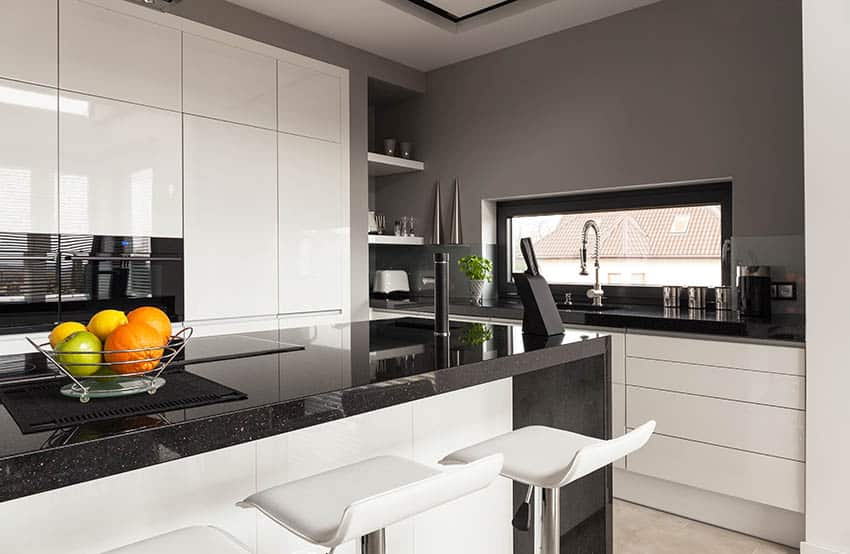
Polished granite has been buffed to a high sheen. It has a shiny, reflective surface that lends an almost liquid appearance to this durable stone. These polished surfaces are deeper in tone and darker in color than unpolished options.
A polished slab is the least absorbent of any kind of granite countertop. It is the easiest to clean and will require sealing less often. Leathered surfaces requires more effort when cleaning to make sure the divots stay clear of debris. The leathering process opens more pores in the stone, so it is more absorbent and will need to be sealed more frequently.
Honed vs Leathered Finishes
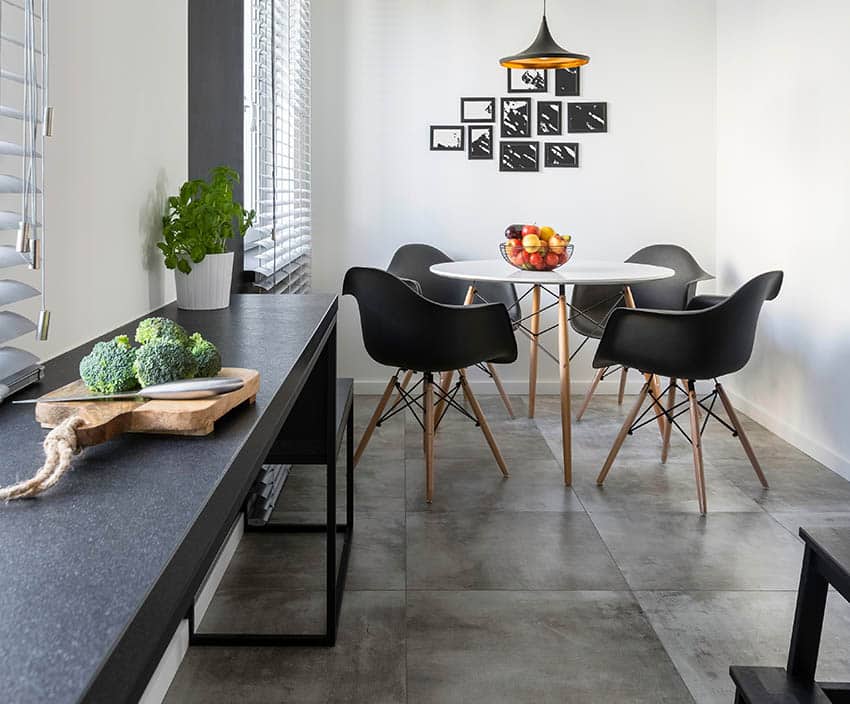
Honed granite is removed from the assembly line before reaching the end of the polishing process. It’s surface is just as smooth as a polished finish. Instead of reflecting light, the honed finish absorbs it. Slabs finished by honing are generally lighter in color than slabs from the same quarry that are finished by polishing. Honed finishes tend to show fingerprints, grease, and dust more easily than polished or leathered.
To make leathered finishes, stone manufacturers start with a slab that has already been honed. Then, diamond-tipped brushes are used to create a slightly more textured surface. The bristles of the brushes create tiny dimples in the surface, contributing to it’s leather appearance. Leathered granite is shinier than honed surfaces, but not as reflective as polished options. A leather finish can be applied to granite of any color, but tends to be most dramatic when applied to darker color stone.
How to Clean Leathered Surfaces

Polishing granite closes the pores of the stone. When sealed, it is very resistant to spills and splashes. Leathered stone surfaces does not have this same protection, although the process tightened the natural pores of the stone somewhat.
Wipe up spills promptly to avoid staining. Keep acids like citrus juice from pooling on the countertop; they can create stains. The textured surface of leathered applications is very forgiving when it comes to grease, fingerprints, and crumbs, and it is less absorbent than a honed surface.
Never use an acid-containing cleaner on your granite countertops, no matter what kind of finish was applied. Vinegar, bleach, those handy orange-scented cleaning wipes — all these options are out. Instead, use soap and water for daily cleaning.
To remove oil-based stains, make a paste from baking soda and water. Swap hydrogen peroxide for the water if the stain is water-based. When the stain is coated with paste, cover it and let it sit for a few hours. Wipe up the paste using a wet cloth. If the leathered surface should chip, dent, or permanently stain, it is likely the whole surface will need to be refinished. It’s very difficult to match the texture without resurfacing the entire slab.
To test whether your granite countertop needs to be resealed, drip some water in an inconspicuous spot. Set a timer for ten minutes. When the time is up, if the water is still sitting on the surface of your countertop, the sealant is still effective. If the water has been partially or fully absorbed, it’s time to reseal.
Leathered countertops are gorgeous, trendy, and easy to maintain. This new method of granite finishing is a fantastic option for consumers who are underwhelmed by honed concrete and don’t want the high shine of polished concrete. The addition of leathered granite to a kitchen can create an inviting and comfortable space for people to gather and enjoy.

